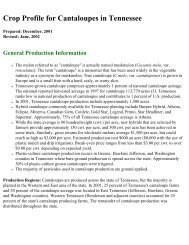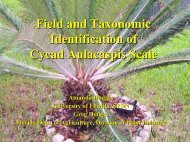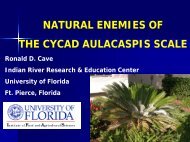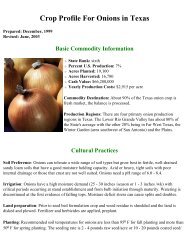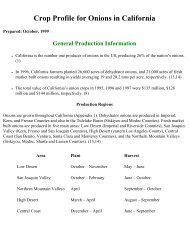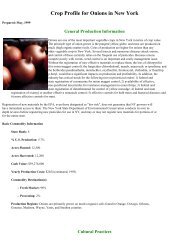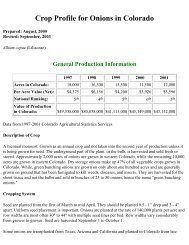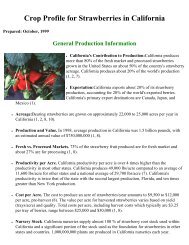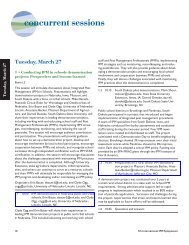Crop Profile for Cherries (Sweet) - Regional IPM Centers
Crop Profile for Cherries (Sweet) - Regional IPM Centers
Crop Profile for Cherries (Sweet) - Regional IPM Centers
You also want an ePaper? Increase the reach of your titles
YUMPU automatically turns print PDFs into web optimized ePapers that Google loves.
Insect Pests<br />
WESTERN CHERRY FRUIT FLY<br />
Rhagoletis indifferens (Curran)<br />
Western cherry fruit fly is native to North America and has been found in the Pacific Northwest states<br />
since the 1940s. Even though it does very little actual damage to commercial fruit and is rarely found in<br />
commercial orchards, it is the most important pest of sweet cherries in Washington because of<br />
quarantine restrictions. Quarantine agreements with Cali<strong>for</strong>nia and export market countries carry a zero<br />
tolerance <strong>for</strong> cherry fruit fly larvae in packed fruit. Washington State Department of Agriculture<br />
(WSDA) inspectors are stationed at each cherry packing facility during the harvest season to check fruit<br />
<strong>for</strong> infestation as it comes to the packinghouse, prior to acceptance, and again after packing. Fruit is<br />
rarely found to be infested. However, single larvae are found during inspections of fruit produced in<br />
Washington State’s sweet cherries from five to twenty times per season. When a larva is found, the<br />
entire load of infested fruit is rejected, and all other fruit from that grower is intensively inspected <strong>for</strong><br />
signs of cherry fruit fly. While native cherry species have been reported as hosts, it is uncommon to find<br />
this pest on any tree other than sweet or tart cherry.<br />
Control<br />
Scouting/Predictive Models<br />
The zero quarantine tolerance <strong>for</strong> cherry fruit fly has <strong>for</strong>ced growers into intensive control programs to<br />
achieve perfect control. Commercial growers begin spraying when first fly emergence is detected by<br />
advisors on infested sentinel trees or when temperature-driven phenology models (Jones, et al., 1991)<br />
indicate emergence has commenced in the region. The phenology model has predicted first trap catch of<br />
adults on heavily infested trees very accurately during eight seasons of use in Washington State. Once<br />
growers commence spraying <strong>for</strong> cherry fruit fly control, they continue to spray every week to ten days,



